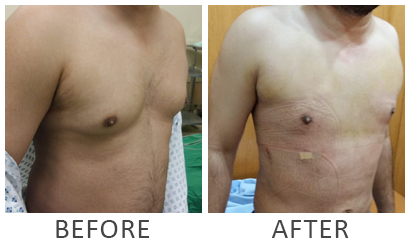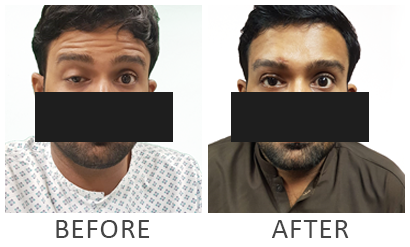Under-Eye Puffiness and Bags: Causes, Treatments & Surgical Options
What Causes Under-Eye Puffiness and Bags?
👁️ Common Reasons
Baggy eyes are a common concern for many individuals. It can make you look tired, aged, or even unwell. Understanding its causes is essential for effective prevention and treatment.
- Aging: As we age, the muscles and tissues around the eyes weaken, allowing fat that normally supports the eyes to move into the lower eyelids, creating puffiness. Collagen loss also reduces skin elasticity, worsening the appearance.
- Fluid Retention: Consuming too much salt or experiencing hormonal changes can cause the body to retain fluid, which collects under the eyes.
- Lack of Sleep: Not getting enough sleep causes blood vessels under the eyes to dilate, leading to puffiness and dark circles.
- Allergies: Allergic reactions cause inflammation and swelling, including around the eyes. Histamine release can also contribute to puffiness.
- Genetics: If puffy eyes run in your family, you may be more prone to them regardless of your lifestyle.
- Medical Conditions: Thyroid dysfunction and other health issues can lead to persistent puffiness under the eyes.
🏠 Home Remedies & Natural Solutions for baggy eyes
While under-eye puffiness is frustrating, many non-invasive treatments are available to reduce it naturally:
- Cold Compress: Applying a cold compress or chilled spoons over closed eyes constricts blood vessels and reduces swelling.
- Elevate Your Head While Sleeping: Using an extra pillow helps prevent fluid from pooling under your eyes overnight.
- Get Enough Sleep: Aim for 7–9 hours of restful sleep to allow your skin to recover and repair.
- Stay Hydrated: Drink plenty of water to flush out excess salt and toxins from the body.
- Limit Salt Intake: A diet high in sodium contributes to water retention and puffiness.
- Use Cucumber Slices or Green Tea Bags: Both have anti-inflammatory properties and help soothe the skin.
- Facial Massage: Gently massaging the under-eye area improves circulation and lymphatic drainage.
These methods are simple and cost-effective, making them ideal for daily routines.
🧴 Clinical Treatments for baggy Eyes Puffiness
If home remedies are not enough, professional treatments can deliver more visible and lasting results:
1. Eye Creams and Serums
- Ingredients like caffeine, retinol, hyaluronic acid, and vitamin C can tighten the skin and reduce inflammation.
- Use products specifically formulated for the delicate eye area.
2. Dermal Fillers
- Injectable fillers like hyaluronic acid restore lost volume beneath the eyes.
- This helps smooth the transition between the lower eyelid and the cheek, minimizing shadows and puffiness.
3. Laser Therapy
- Laser resurfacing treatments stimulate collagen production and tighten the skin.
- They are effective in reducing fine lines and rejuvenating the under-eye area.
4. Chemical Peels
- Light peels help improve skin tone and reduce pigmentation.
- They work by removing the damaged top layers of skin and revealing fresh, smooth skin underneath.
🔪 Blepharoplasty: The Surgical Fix for baggy Eyes
📌 What is Blepharoplasty?
Blepharoplasty is a cosmetic surgical procedure that removes or repositions excess skin, fat, or muscle from the eyelids. It is the most effective and long-lasting solution for moderate to severe puffiness and drooping eyelids.
This procedure is often recommended when:
- Puffiness interferes with vision
- Non-surgical treatments fail
- Permanent results are desired
🛠️ How the Procedure Works
Blepharoplasty can be performed on the upper eyelids, lower eyelids, or both.
- Upper Eyelid Surgery: An incision is made along the natural crease to remove excess tissue.
- Lower Eyelid Surgery: Fat is either removed or redistributed via an incision just below the lower lash line or inside the eyelid (transconjunctival blepharoplasty).
It is typically an outpatient procedure that lasts 1–2 hours and requires local or general anesthesia.
🕒 Recovery Timeline
- Day 1–2: Expect swelling, bruising, and mild discomfort.
- Day 3–5: Ice packs and prescribed medication help reduce inflammation.
- Day 6–7: Stitches are removed (if non-absorbable).
- Week 2: Most swelling subsides; you can resume light activities.
- Week 3–4: Visible improvement appears; makeup can be used to cover minor bruises.
⚠️ Risks and Side Effects
- Infection
- Scarring
- Temporary blurry or double vision
- Difficulty fully closing the eyes
- Uneven healing
Choose a certified surgeon to minimize these risks and ensure proper recovery.
✅ Prevention Tips to Avoid Puffy Eyes
- Follow a healthy diet rich in antioxidants, vitamin E, and omega-3s
- Get regular sleep (7–9 hours)
- Avoid smoking which breaks down collagen
- Use SPF and wear sunglasses to protect the delicate eye area
- Stay active – regular exercise improves blood circulation
- Manage allergies with antihistamines and avoidance techniques
🌟 Comparison Table: Non-Surgical vs Surgical Treatments
ConcernHome RemediesClinical OptionsSurgical Solution
Mild puffiness Cold compress, sleep Eye creams, peels Not needed
Moderate puffiness Hydration, massage Fillers, laser therapy Optional
Severe, permanent bags Not effective Temporary improvements Blepharoplasty (Permanent)
❓ Frequently Asked Questions (FAQs) for baggy eyes
Q: Do all under-eye puffiness cases require surgery?
A: No. Many cases respond well to lifestyle changes and topical treatments.
Q: How long does blepharoplasty last?
A: Results can last for 10–15 years or longer, depending on lifestyle and genetics.
Q: Is there an age limit for eye bag surgery?
A: Ideal candidates are typically over 35, but younger patients with genetic eye bags may also benefit.
Q: Are the results of dermal fillers permanent?
A: No. Fillers typically last 6–12 months and require maintenance.
Q: Will I have visible scars after eyelid surgery?
A: Minimal scarring is expected and usually hidden in the natural folds of the eyelids.
Q: Can puffy eyes be prevented entirely?
A: While not entirely preventable, good skincare, sleep, and hydration can reduce their appearance.
✍️ Final Thoughts
Under-eye puffiness is a common but manageable cosmetic concern. While mild puffiness can often be addressed with home remedies and over-the-counter products, persistent or severe cases may require professional intervention. Non-invasive options such as dermal fillers and laser treatments provide temporary relief, while blepharoplasty remains the gold standard for a permanent solution.
If you’re unsure about the right approach, consult a dermatologist or cosmetic surgeon to discuss your unique needs and expectations. Early intervention, a healthy lifestyle, and proper skincare can go a long way in maintaining youthful, bright eyes.
Contact Us
Email ID: ahtcspk@yahoo.com
Contact no: 0323 2847513
Facebook Pages:
Karachi Plastic Surgery
Dr Shehab Beg Plastic Surgeon
Advanced Hair Transplant & Plastic Surgery
Website:





